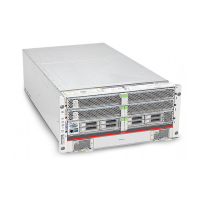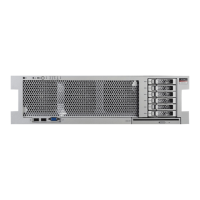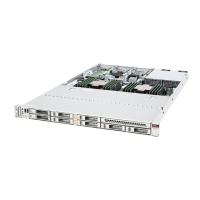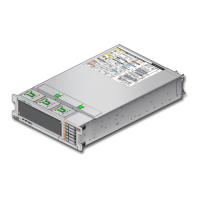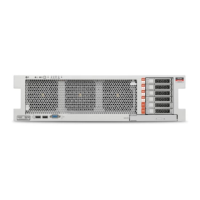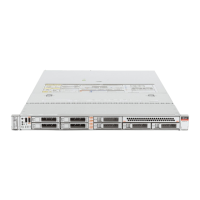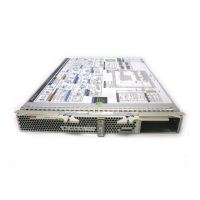■
“Removing and Installing DIMMs (CRU)” on page 33
■
“Error Correction and Parity” on page 36
■
“DIMM Population Rules” on page 38
DIMM Population Rules
When installing, removing, or replacing DIMMs, adhere to the following population rules.
Physical slot population
rules
All DIMMs must be DDR3.
DIMMs are available in two speeds: 1066 MHz and 1333 MHz
Registered DIMMs (RDIMMs) must be ECC only.
Do not populate any DIMM slot next to an empty CPU socket. Each CPU contains a
separate memory controller.
Populate the DIMM slots for each memory channel that are the farthest from the
CPU rst.
Blue DIMM slots are always populated rst. For example, populate D5/D3/D1 rst,
then populate D4/D2/D0.
Performance
Considerations
The best performance is assured by preserving symmetry; for example: adding two of
the same kind of DIMMs, one per memory channel, and ensuring that both CPUs
have the same size of DIMMs populated in the same manner.
DIMMs with dierent speeds can be installed in dierent slots within the same
channel; however, the speed of the slowest DIMM is applied to all the DIMMs (faster
DIMMs operate at the slowest supported frequency).
DIMM speed rules are as follows:
■
2 x DIMM per channel = 1066 MHz
■
2 x DIMM per channel = 1333 MHz
■
1 x DIMM per channel = 1333 MHz (if using 1333 MHz DIMMs)
■
1 x DIMM per channel = 1066 MHz (if using 1066 MHz DIMMs)
These are the acceptable DIMM congurations.
DIMM
Qty
CPU
Qty
DIMM SLOT Location
CPU 0 CPU 1
11D5
12 conguration not allowed
2 1 D5, D3
DIMM Population Rules
Sun Fire X2270 M2 Server Service Manual • January, 2012, –1238
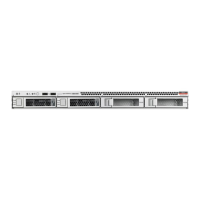
